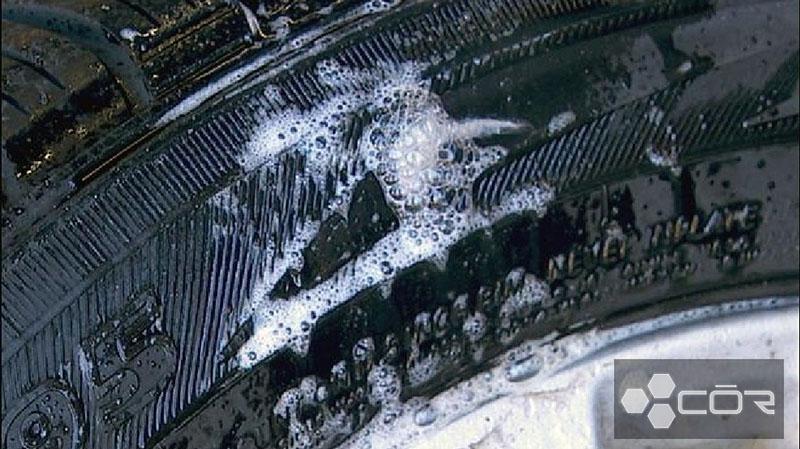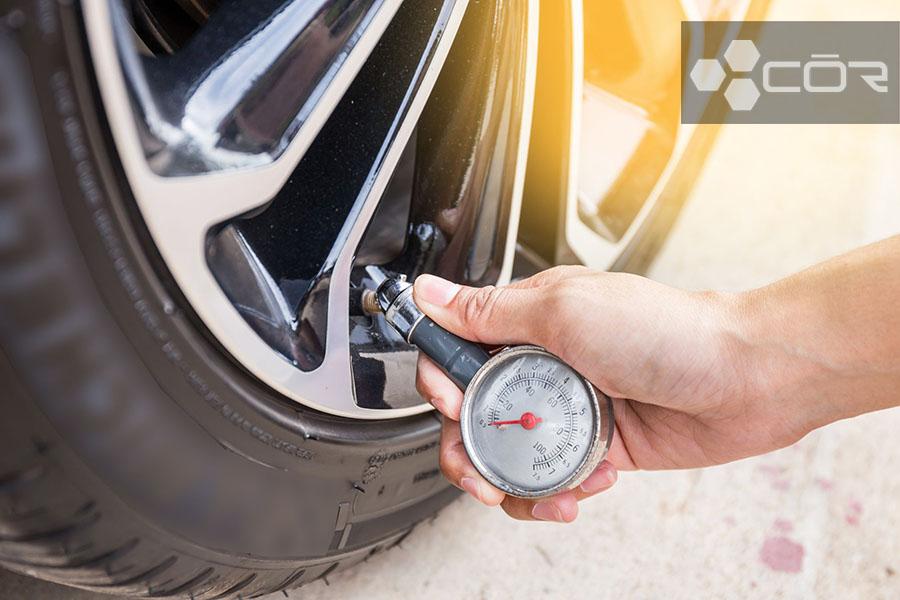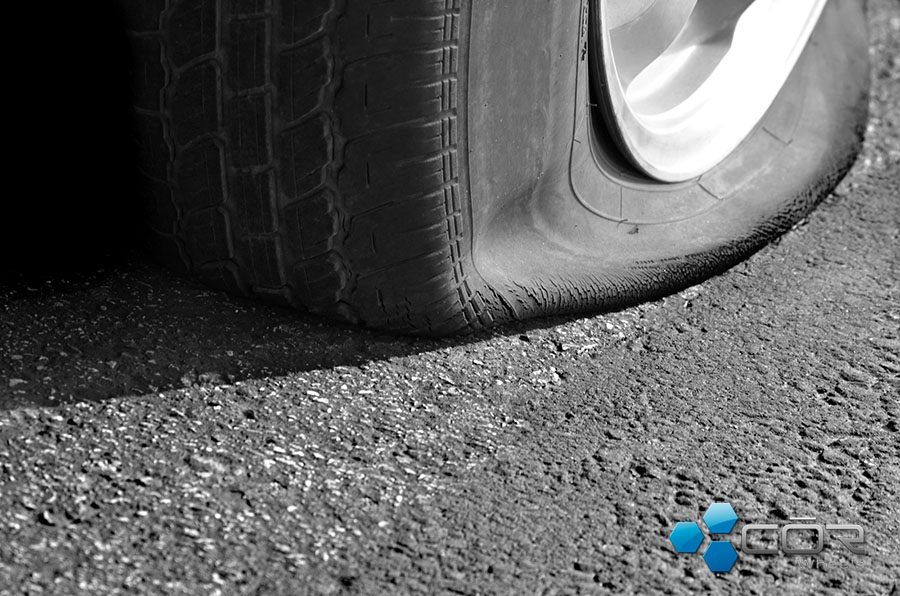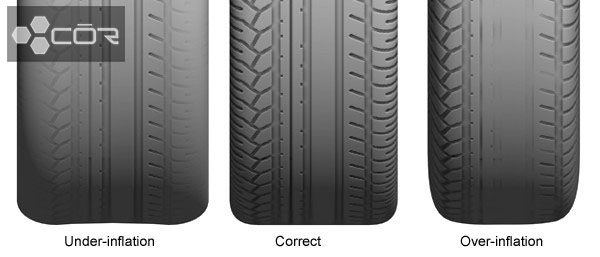At this point, you’ve probably heard countless stories on the dangers of driving with low tire pressure. So, we all understand that underinflated tires pose a risk. The important question is: what tire pressure is considered too low? In other words, at what level of PSI can we confidently drive without worrying about potential mishaps on the road?
Table of Contents
How Low is Too Low for Tire Pressure?
According to most experts, it is crucial to maintain tire pressure between 32 and 35 PSI (Pound per Square Inch) for every vehicle model. This range is widely recommended to ensure optimal safety and performance.
If you neglect to inflate your tires and find yourself in a bind, the minimum tire pressure you can drive on is 20 PSI (but remember, never let it reach that point!). Any pressure below 20 PSI is considered dangerously low and can be classified as a flat tire.
Fortunately, modern vehicles are equipped with a tire pressure monitoring system, which is now mandatory in many regions. Thanks to these sensors, there’s no need for daily inspections of tire pressure. The system will alert you whenever there is a significant drop in pressure!
In summary:
- 32 to 35 PSI: Mandatory range for safe driving
- 20 to 28 PSI: Acceptable minimum, although it is advisable to refill your tires promptly
- Below 20 PSI: Considered dangerously low; refill your tires immediately
Factors Influencing Tire Pressure
Aside from foreign objects causing punctures, two common factors strongly affect tire pressure: air temperature and slow leaks.
1. Slow Leaks

Although slow leaks may initially seem similar to tire punctures, they differ in terms of the speed of air loss. While regular punctures result in rapid deflation, slow leaks occur gradually.
What causes slow leaks? There are several potential culprits:
- Improper sealing between the tire and wheel during new tire installation
- Cracking tires
- Damaged wheels
- Broken air valves
- Poorly repaired or unrepaired punctures
Thankfully, because slow leaks cause less severe damage than punctures, tire replacements aren’t always necessary. Simple patches or plugs are often sufficient, especially if you detect the leaks early.
2. Air Pressure

Air temperature is another significant factor influencing tire pressure. In short, tires expand in warm air and contract in cool air. That’s why many drivers notice low air pressure warnings on their tire pressure monitoring systems during cold mornings, even if their cars haven’t been driven for weeks.
Therefore, mechanics and manufacturers recommend checking tire inflation during chilly or cool weather, especially if the vehicle has been idle for an extended period.
Signs of Low Tire Pressure
1. Worn-Out Tires
Worn tires are one of the primary and most critical indicators of low tire pressure. Underinflation leads to increased rubber contact with the road, causing a rise in temperature and accelerated wear.
Failure to address this issue promptly can result in overheating problems and potentially catastrophic consequences. Treads can separate, steering can malfunction, and driving becomes increasingly dangerous.
2. Decreased Gas Mileage
Pay attention to deteriorating gas mileage, as it can be a sign of low tire pressure. Many people don’t immediately associate reduced gas mileage with low pressure, assuming there are other technical issues at play. However, these two problems are more closely related than one might think.
When tire pressure drops, the vehicle requires more energy to move from a stationary position, such as when restarting after coming to a stop in traffic. This extra power consumption results in a significant decrease in gas mileage.
3. Increased Emissions
Underinflation causes the engine to work harder than usual to achieve optimal performance. This not only affects gas mileage but also results in increased emissions. Recent studies suggest that low tire pressure can contribute an additional 21 pounds of CO2 emissions, further polluting the environment.
Aside from the environmental impact, it’s essential to adhere to specific legal requirements regarding car emissions in certain locations. Take care of your tires promptly to ensure your vehicle passes emission tests.
4. Flapping Noises While Driving
Flapping or dull noises while driving are often associated with underinflated tires. As mentioned earlier, low tire pressure leads to increased rubber contact with the road, causing the tires to slap repeatedly. This slapping sound is the source of the noise.
These signals are more serious than the ones mentioned before, as they indicate the high risk of having a tire pressure lower than 20 PSI. Ignoring the issue is not an option; visit a gas station and inflate your tires immediately.
The Dangers of Low Tire Pressure
How low can tire pressure go before it becomes dangerous? As previously mentioned, it is still within the safe range if tire pressure remains between 20 and 28 PSI. However, anything lower than that puts you on a dangerous path.
Here are some terrifying consequences to be aware of:
- Bad Fuel Economy: The car requires more power to propel itself, resulting in increased fuel consumption. Studies have shown that every 5 PSI of underinflation leads to a 2% loss in fuel efficiency.
- Uneven and Premature Wear: Increased road and tire contact lead to poor traction and worn tread, necessitating timely repairs, maintenance, or even tire replacements.
- Compromised Car Control: Underinflated tires flex more than usual, particularly during steering, cornering, and braking. This compromises car control, increases braking distance, and reduces response rates, posing a significant risk in emergency situations.
- Complete Tire Blowouts: Tire blowouts can occur suddenly and without warning, stripping you of control over your vehicle. Accidents become almost inevitable in such circumstances.
Preventing Low Tire Pressure Disasters

Cars equipped with Tire Pressure Monitoring Systems offer convenience by providing advance warning through sensors. But what if your vehicle doesn’t have such a system?
In that case, using a tire gauge to check your tire pressure at least once a month is your best course of action. Place the gauge against the valve system, check the readings, and compare them to the manufacturer’s recommended PSI.
If the results indicate low pressure, inflate your tires immediately. Don’t put it off, as it’s easy to forget once you tell yourself you’ll do it later.
How Long Can You Drive with Low Tire Pressure?
While it’s estimated that you can continue driving for approximately 100 miles with low tire pressure, this number is merely a rough estimate. Various factors and obstacles encountered on the road can affect your ability to continue driving. For example, hitting a nail shortly after a pressure drop can make even one mile challenging for your car.
Is Overinflation as Dangerous as Underinflation?

Yes, both overinflation and underinflation pose risks and can result in compromised vehicle control.
The maximum acceptable level of overinflation is 10% above the manufacturer’s recommended pressure. Exceeding this threshold can negatively impact your driving experience.
Frequently Asked Questions
Is 25 PSI too low?
Yes, 25 PSI is too low, but it is still within an acceptable range. The lowest safe pressure should be 20 PSI.
Is 50 PSI too high?
For passenger cars and regular vehicles, 50 PSI is generally considered too high. However, it may be normal for larger 4WD vehicles.
Conclusion
This article has addressed the question of how low tire pressure is considered dangerous. Here is the main takeaway: always maintain your tire pressure between 32 and 35 PSI, check your tire pressure regularly, and never let it drop below 20 PSI. It’s crucial for both your safety and the performance of your vehicle. For more information about car-related topics, visit 5 WS.

